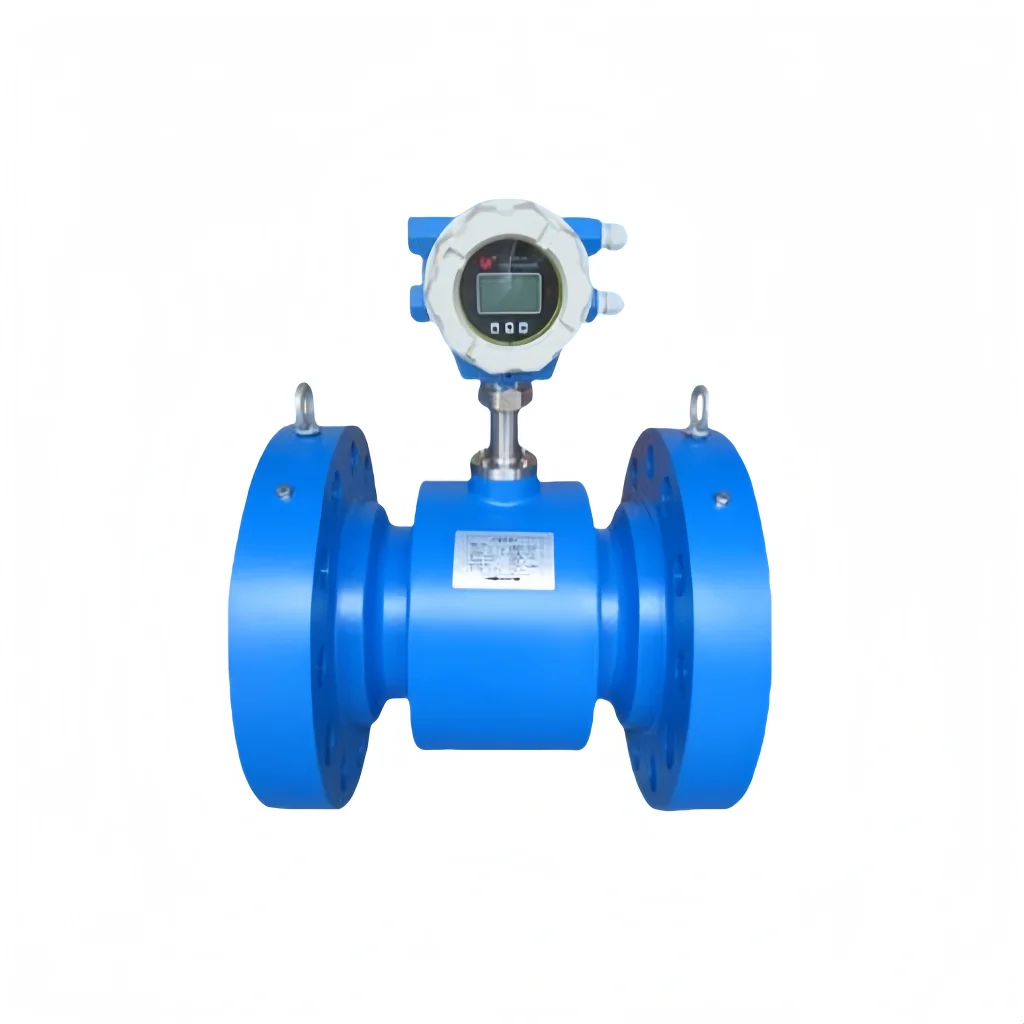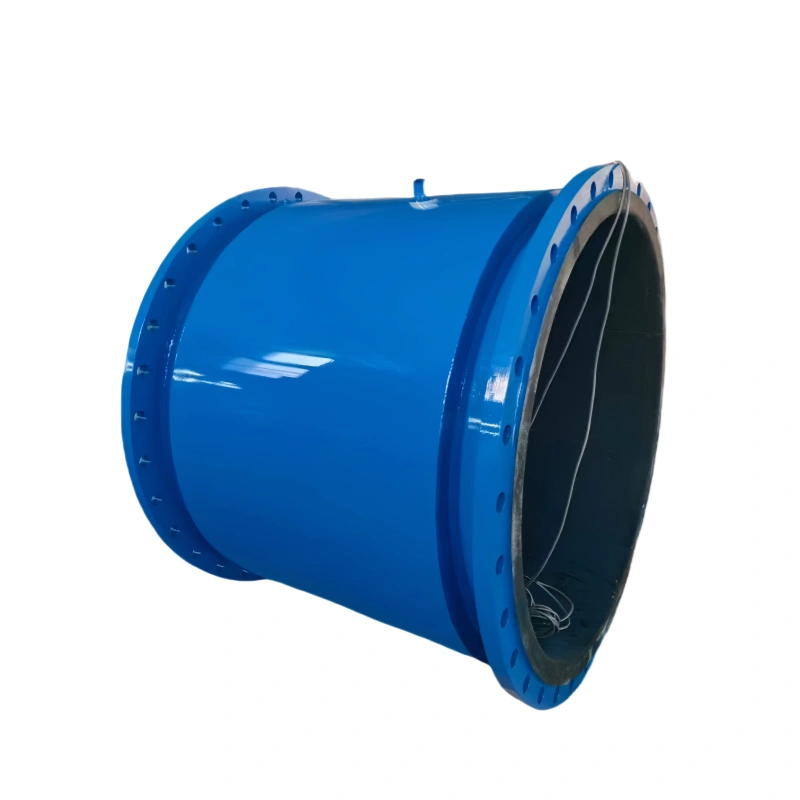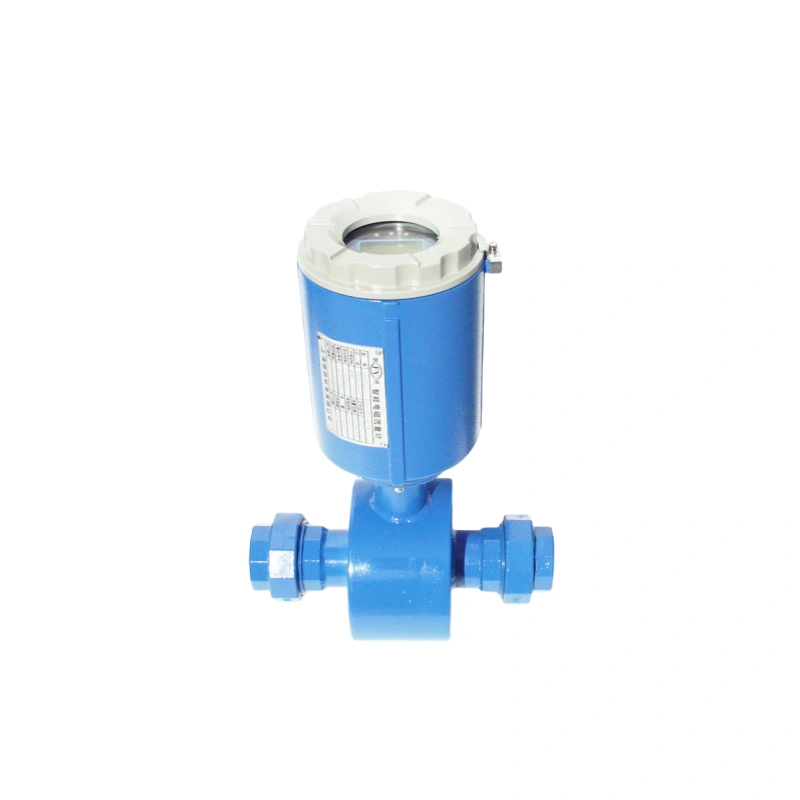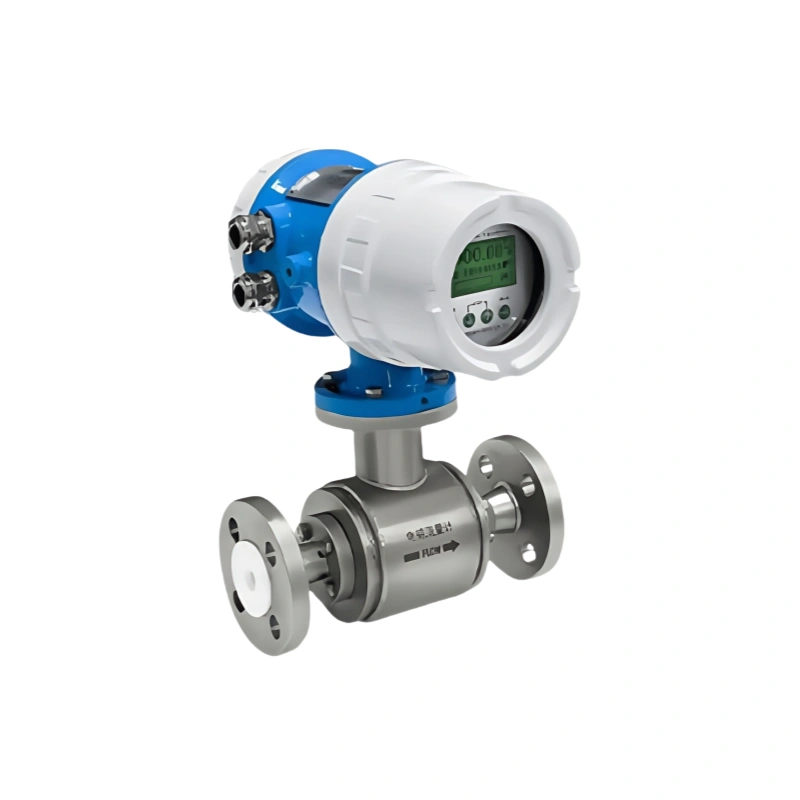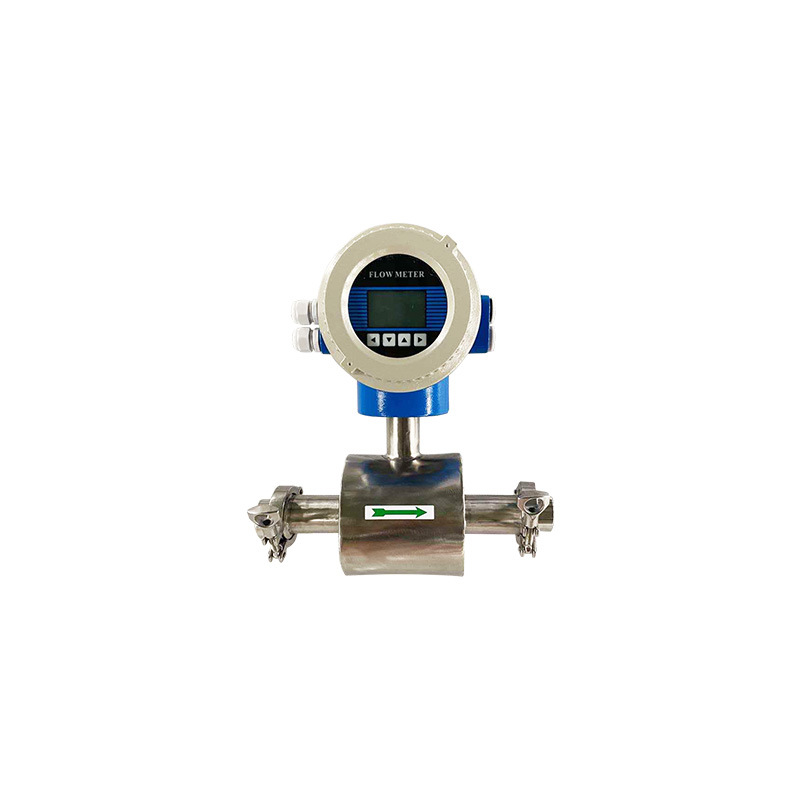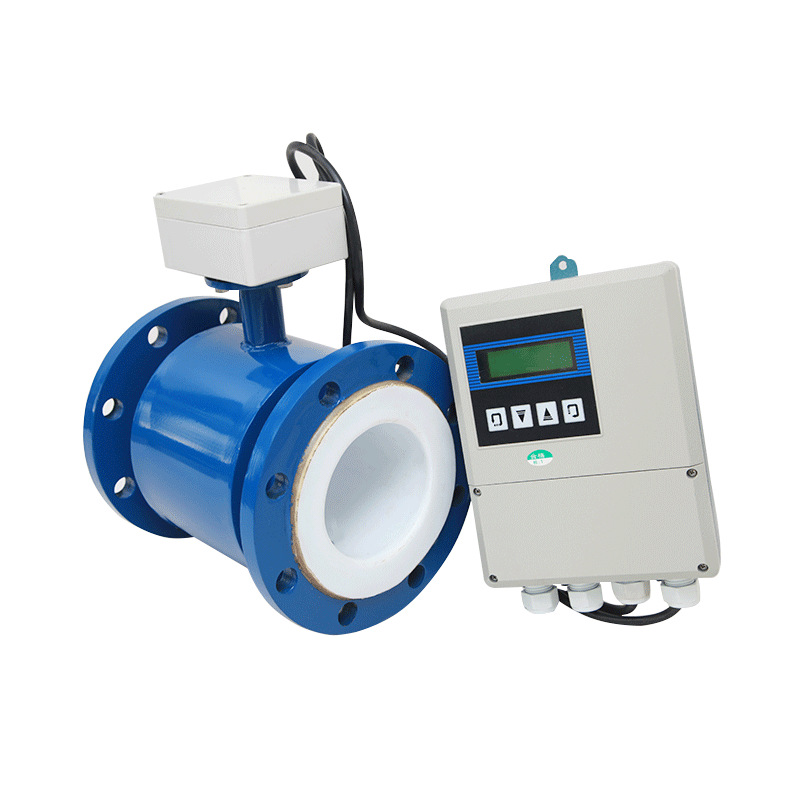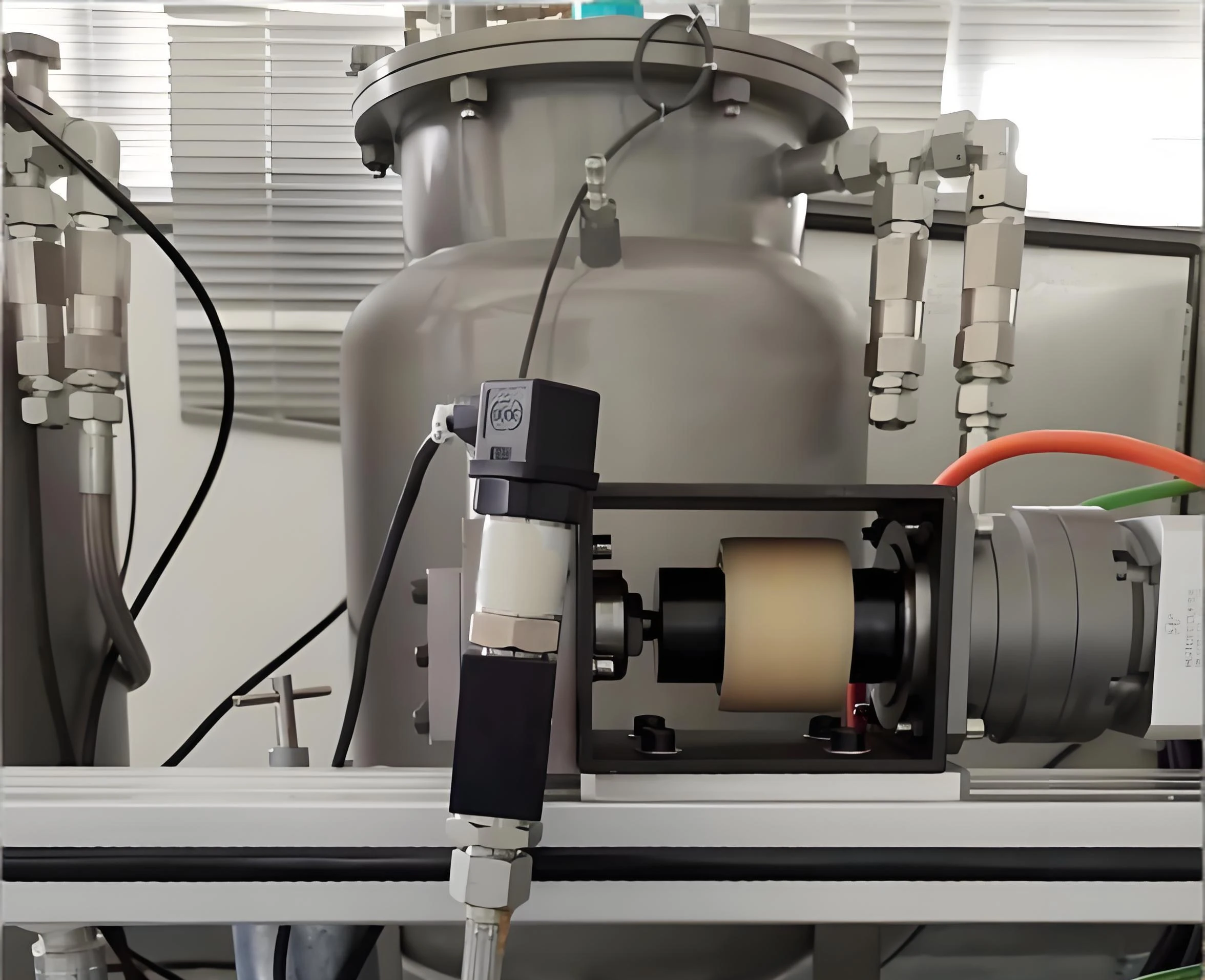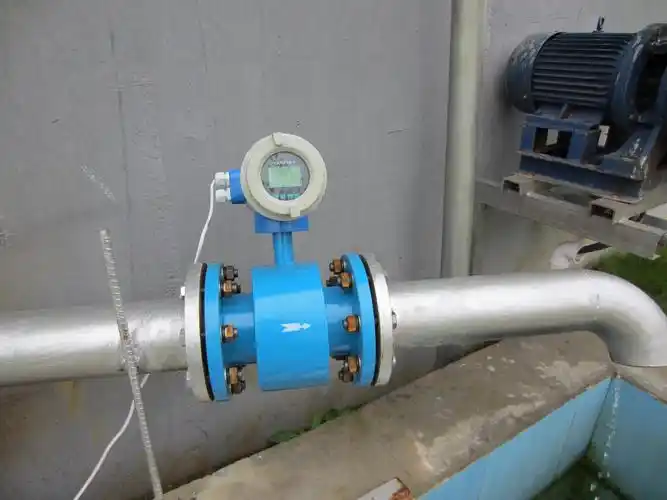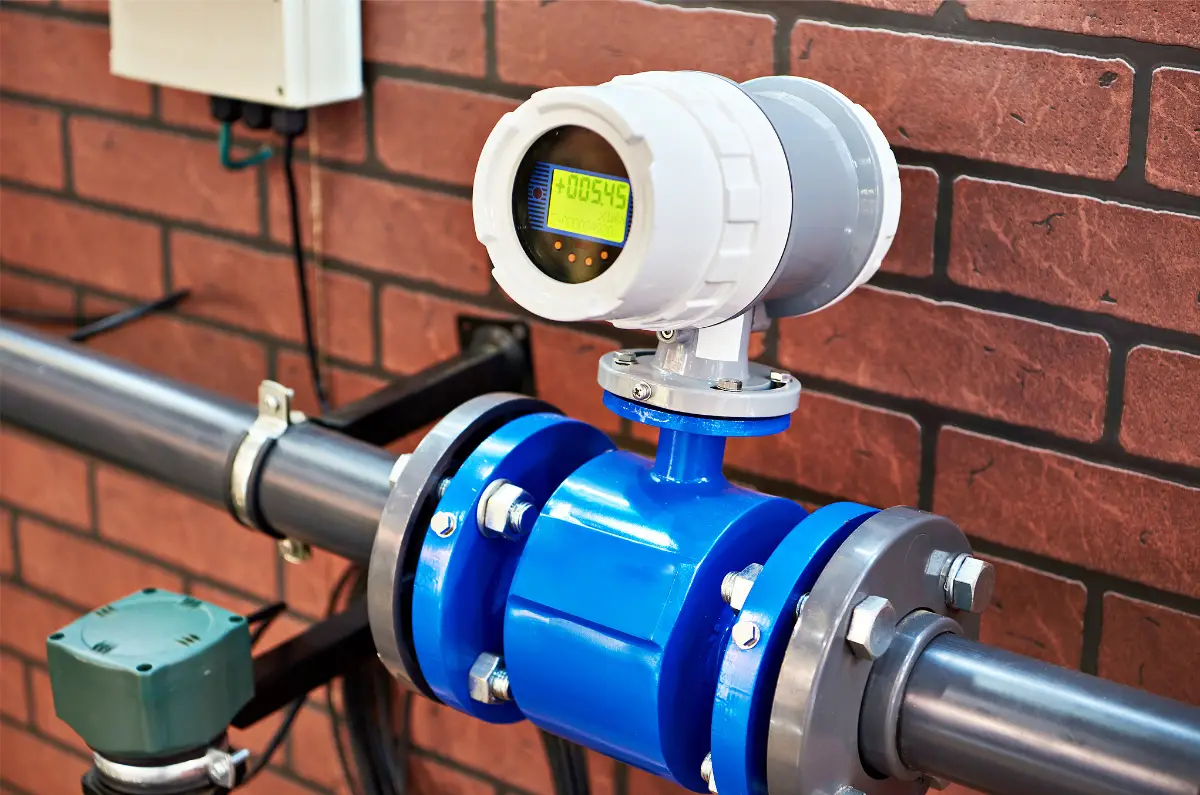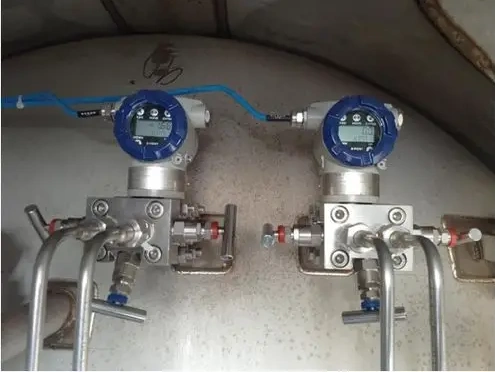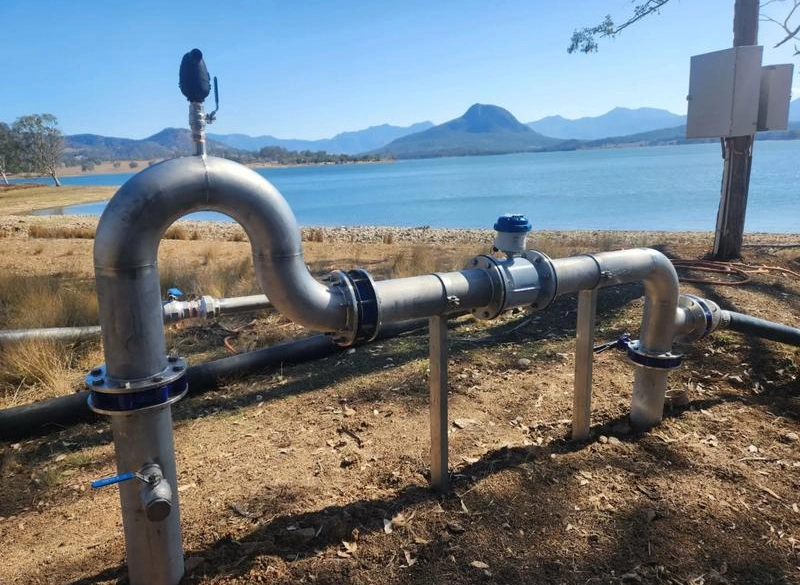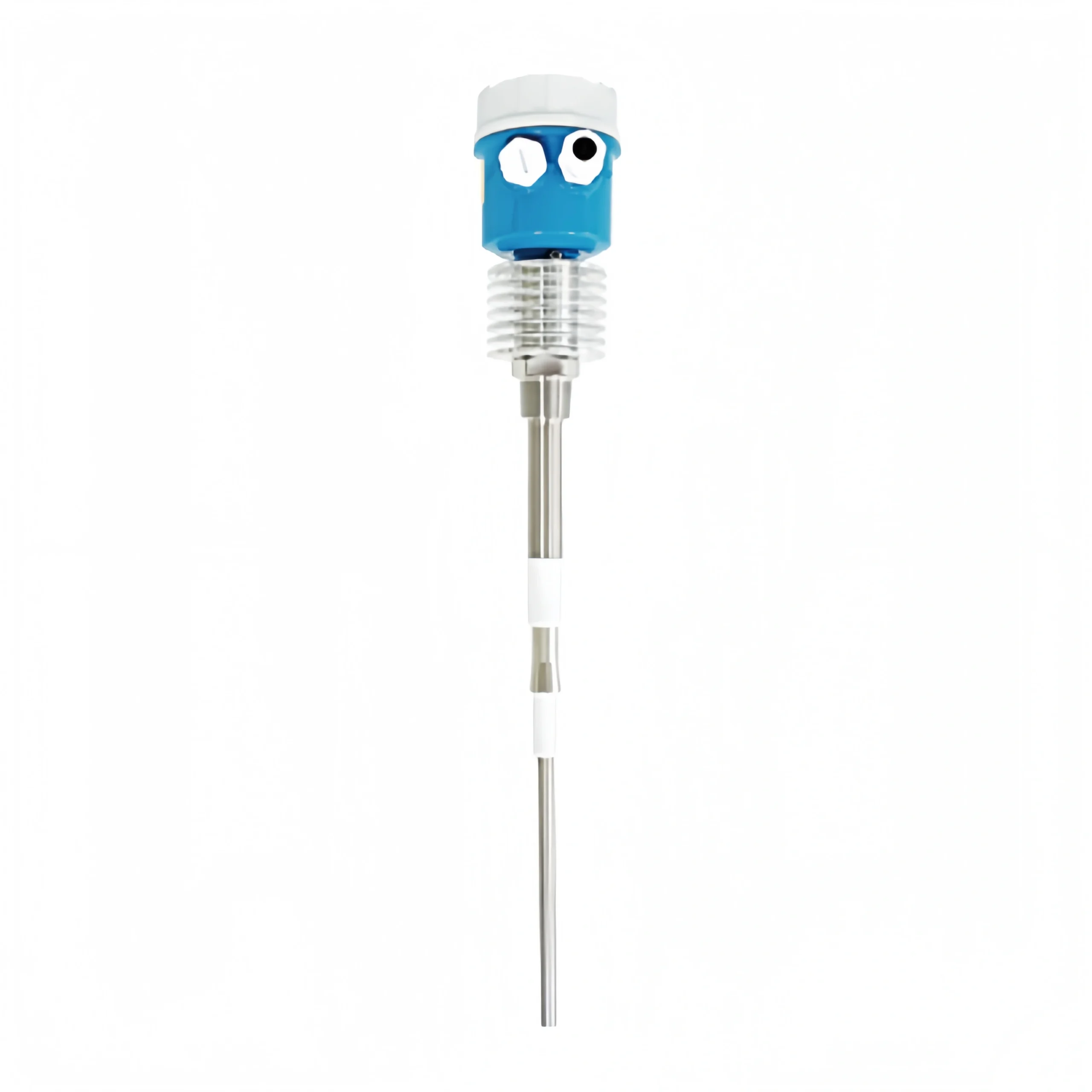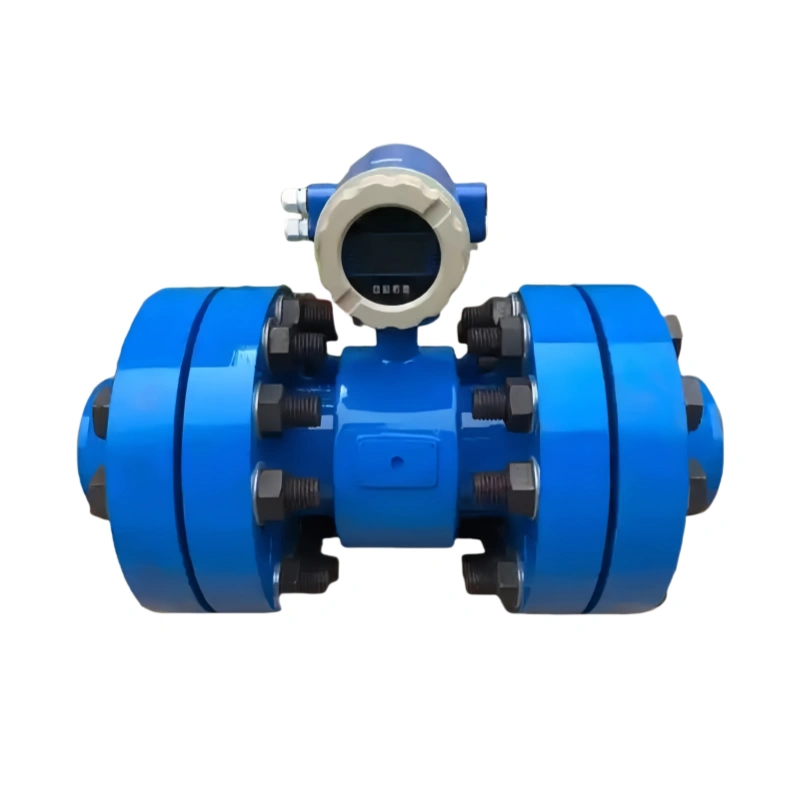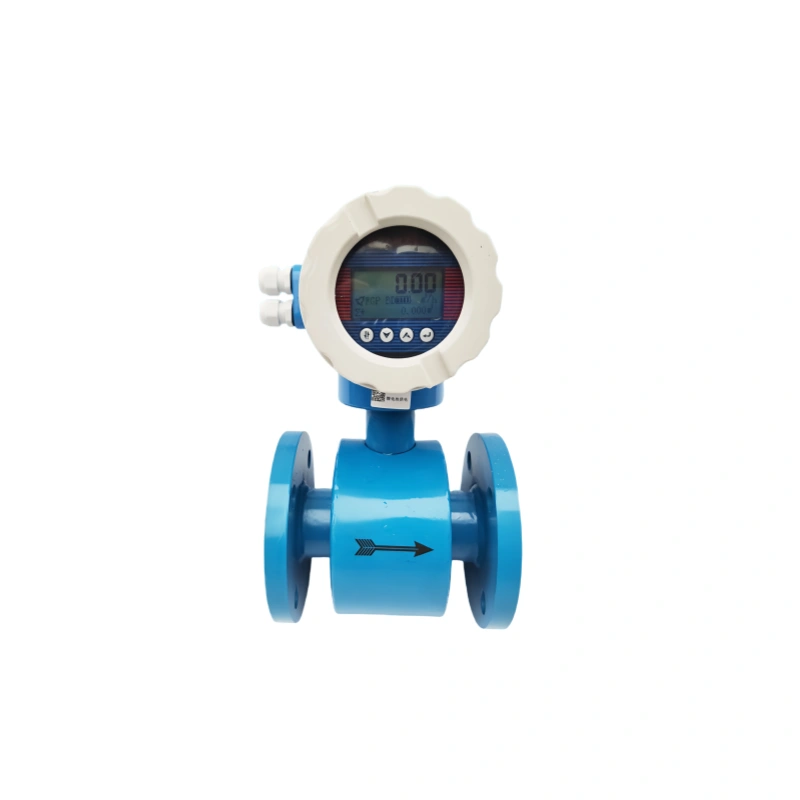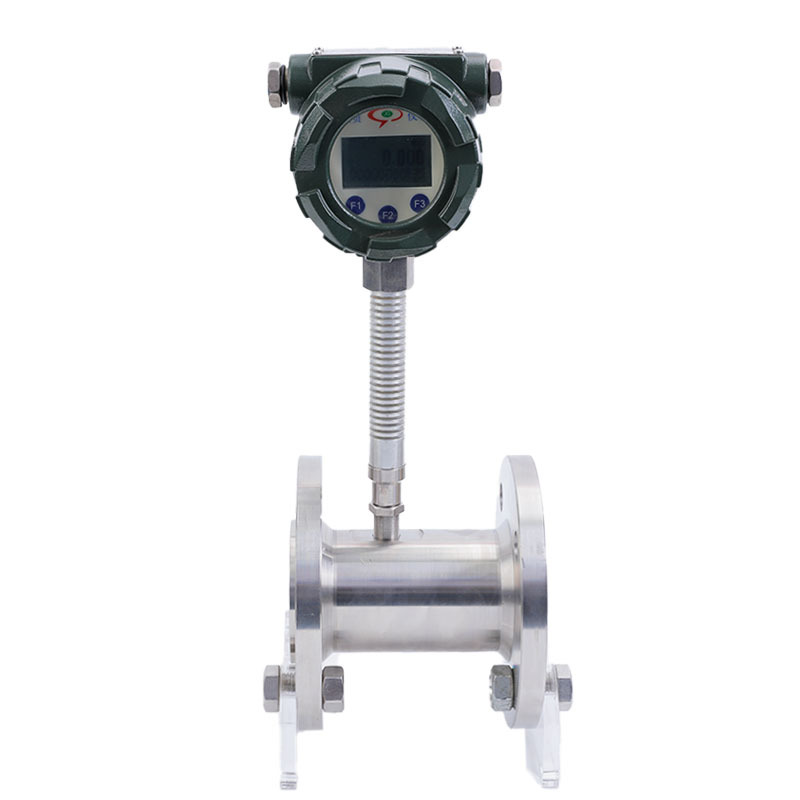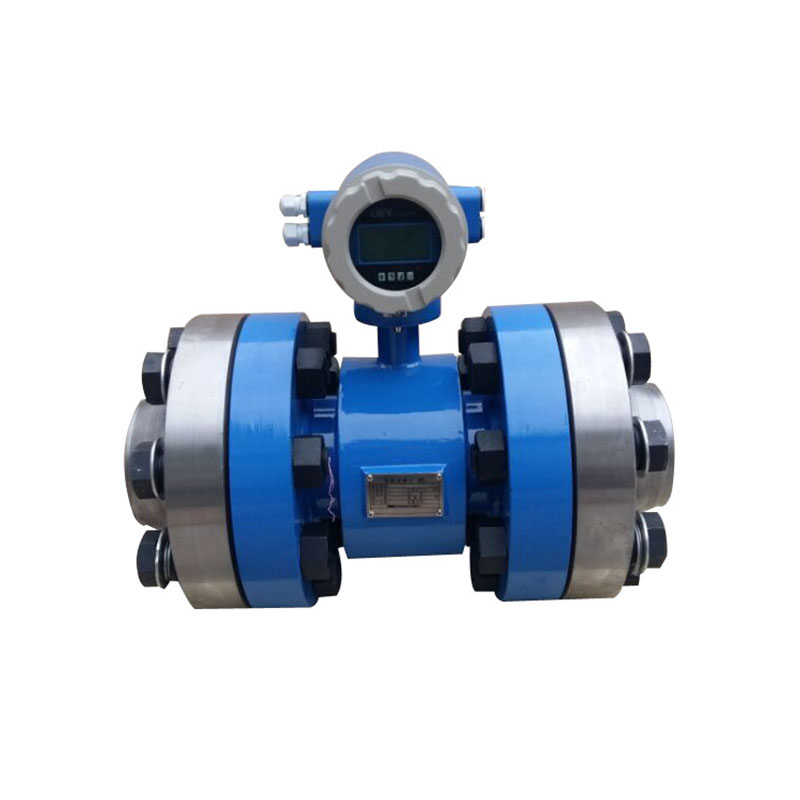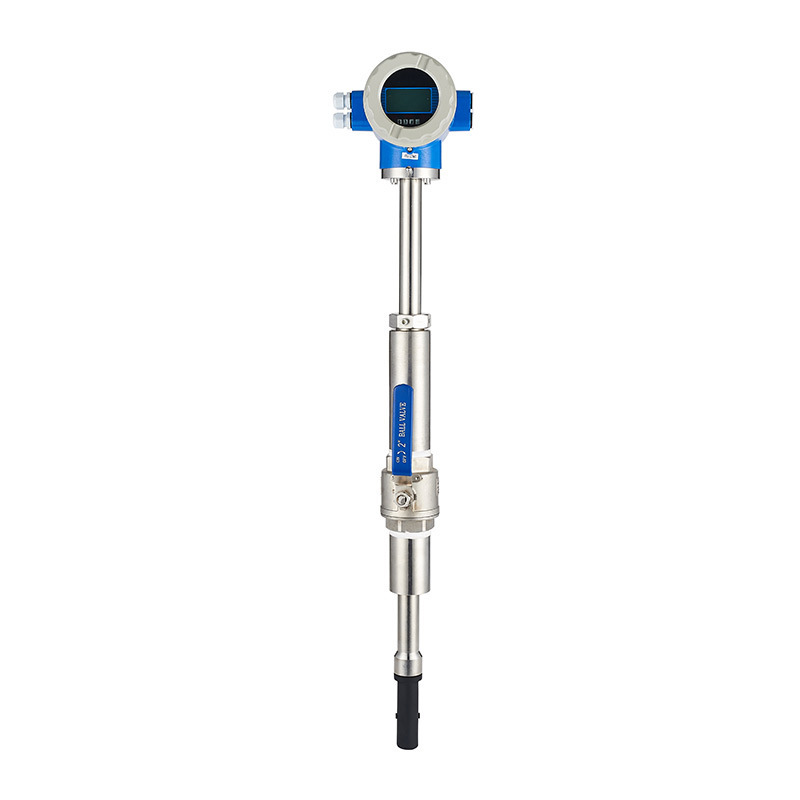This article will introduce the structure, principle, application, etc. of a magnetic flow meter in detail. I believe that after reading this article, you will have a general understanding of a magnetic flow meter.
What is a Magnetic Flow Meter?
Magnetic flow meters are also known by various names, including electromagnetic flow meters, mag meters, magnetic inductive flow meters, and magneto-inductive flow meters. A magnetic flow meter is a device designed to measure the flow of conductive liquids. It is primarily used for measuring the flow of water, seawater, sewage, mud, and solutions of acid and alkali.
Sino-Inst Featured Product
Internal Structure of Magnetic Flow Meter
Magnetic circuit system: Generates a uniform DC or AC magnetic field. DC magnetic circuit is realized by a permanent magnet.
Measuring conduit: Allows the conductive liquid to pass through. The measuring conduit must be made of non-magnetic, low-conductivity, low-thermal conductivity and mechanical strength. Non-magnetic stainless steel, fiberglass, high-strength plastic, aluminum, etc. can be selected.
Electrode: Leads out the induced potential signal proportional to the measured value. Electrodes are generally made of non-magnetic stainless steel. It is required to be flush with the lining. So that the fluid can pass through without obstruction. It is better to install it in the vertical direction of the pipeline. Prevent sediment from accumulating on it and affecting the measurement accuracy.
Shell: It should be made of ferromagnetic material. It is the outer cover of the excitation coil of the distribution system. Isolate the interference of the external magnetic field.
Lining: There is a complete electrical insulation lining on the inner side of the measuring conduit and the flange sealing surface. It is in direct contact with the measured liquid. Its function is to increase the corrosion resistance of the measuring conduit. Prevent the induced potential from being short-circuited by the metal measuring conduit wall. The lining materials are mostly corrosion-resistant, high-temperature-resistant, wear-resistant polytetrafluoroethylene plastics, ceramics, etc.
Converter: The induced potential signal generated by the flow of liquid is very weak. And it is greatly affected by various interference factors. The function of the converter is:
- Amplify the induced potential signal.
- Convert it into a unified standard signal.
- Suppress the main interference signal.
Its task is to convert the induced potential signal Ex detected by the electrode into a unified standard DC signal after amplification.
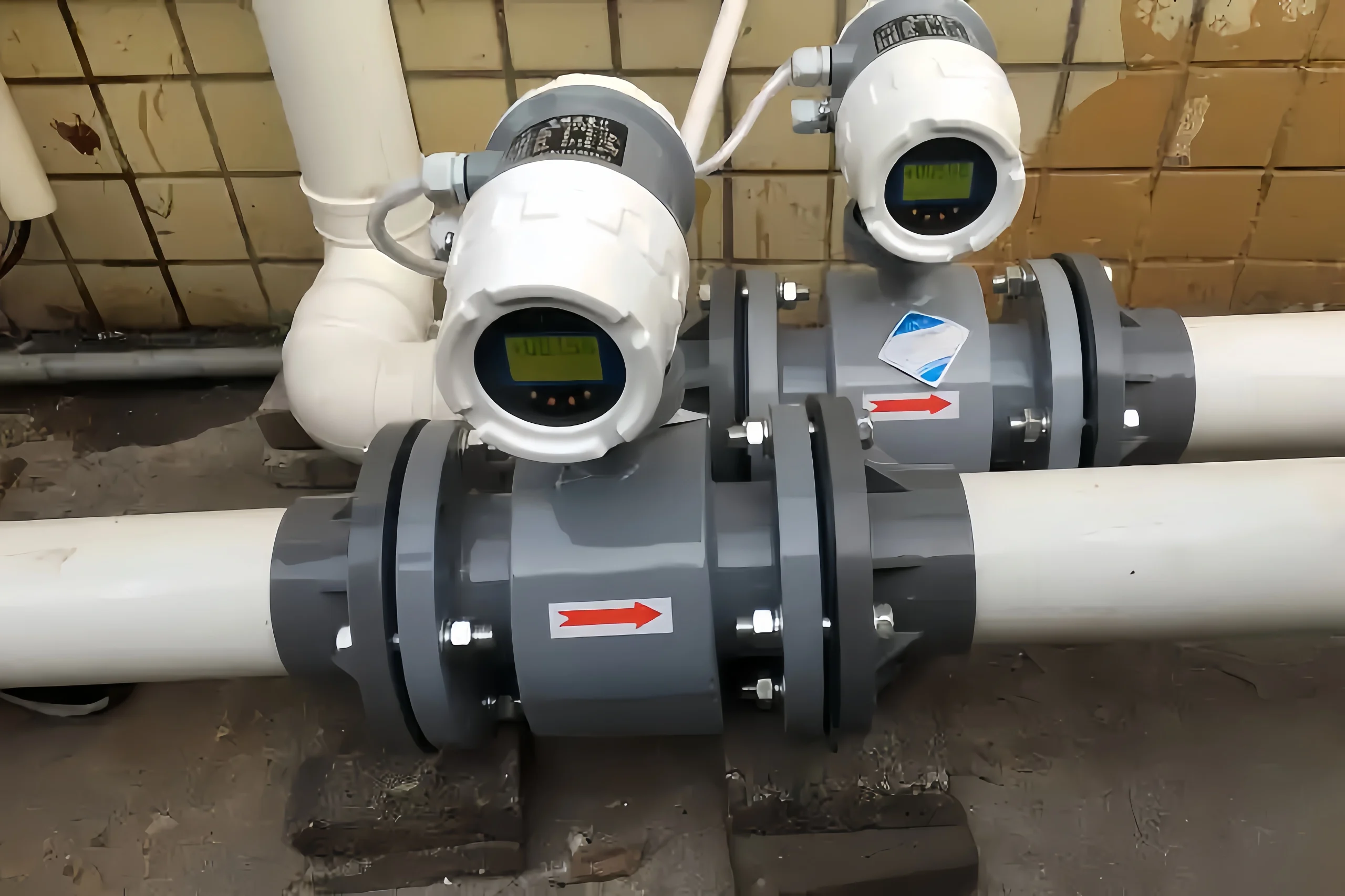
Magnetic Flow Meter Advantage
1. The measurement is not affected by changes in fluid density, viscosity, temperature, pressure and conductivity.
2. There are no obstructive flow parts in the measuring tube, and there is no pressure loss. The straight pipe section requirements are low. It has unique adaptability to slurry measurement.
3. Reasonable selection of sensor lining and electrode materials. It has good corrosion resistance and wear resistance;
4. The converter adopts a novel excitation method. Low power consumption. Stable zero point. High accuracy. Large flow range.
5. The converter can be integrated or split with the sensor.
6. Convenient parameter setting. Reliable programming.
7. The flow meter is a bidirectional measurement system. Three integrators are installed: forward total, reverse total and differential total.
It has multiple outputs: current, pulse, digital communication, HART.
8. The converter adopts surface mount technology (SMT). It has a self-diagnosis function.
9. The measurement accuracy is not affected by changes in fluid density, viscosity, temperature, pressure and conductivity. The sensor induced voltage signal is linearly related to the average flow rate, so the measurement accuracy is high.
10. There is no flow block in the measuring pipe. There is no additional pressure loss. There are no moving parts in the measuring pipe, so the sensor’s life is extremely long.
12. The converter uses the latest and most advanced single-chip microcomputer (MCU) and surface mount technology (SMT) in the world. Multiple languages can be switched at will.
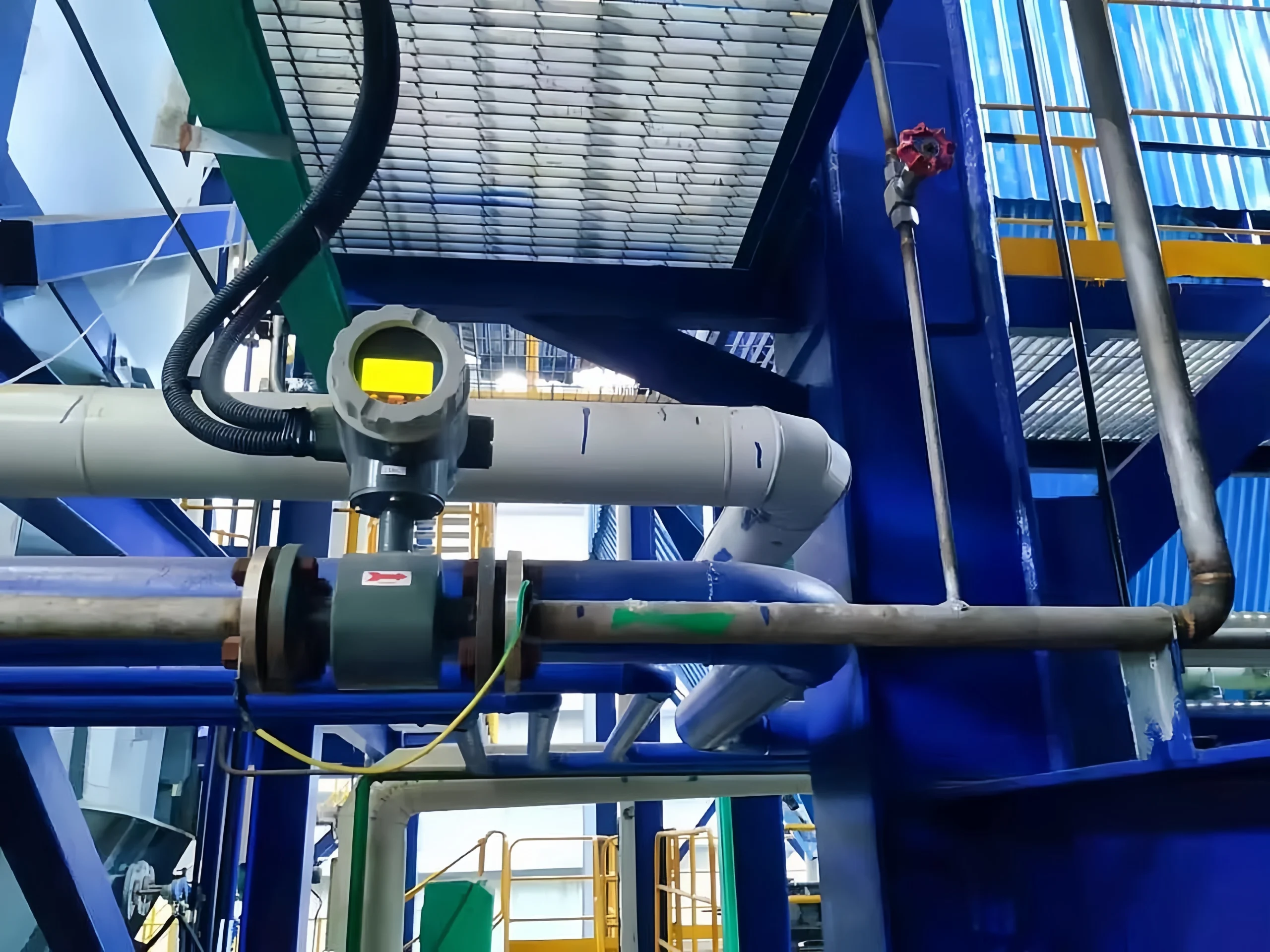
How Does a Magnetic Flow Meter Work?
The measurement principle of the electromagnetic flow meter is based on Faraday’s law of electromagnetic induction. Its core components include coils, electrodes and insulating linings. During measurement, the excitation coil in the sensor is energized to generate a magnetic field.
When the conductive fluid passes through this magnetic field, it will generate a tiny induced electromotive force due to cutting the magnetic lines of force. These induced electromotive forces are captured by the electrodes and transmitted to the converter part of the meter. After the converter is amplified, corrected, etc., it is converted into flow data through a specific formula.
The direction of the induced potential follows the right-hand rule, and its magnitude is given by formula (1):
Ex = BDv
Where,
Ex represents the induced potential, in volts (V);
B is the magnetic induction intensity, in Tesla (T);
D is the inner diameter of the pipe, in meters (m);
v is the average flow rate of the liquid, in meters per second (m/s).
The volume flow rate qv is the product of the flow velocity v and the cross-sectional area of the pipe (πD²/4).
Substituting formula (1) into the formula of qv, we get:
Qv = (πD/4B) * Ex
This means that when the pipe diameter D is fixed. If the magnetic induction intensity B remains unchanged, there is a linear relationship between the measured volume flow rate and the induced potential. By inserting an electrode on each side of the pipe to introduce the induced potential Ex and measuring its magnitude. So, the flow is calculated.
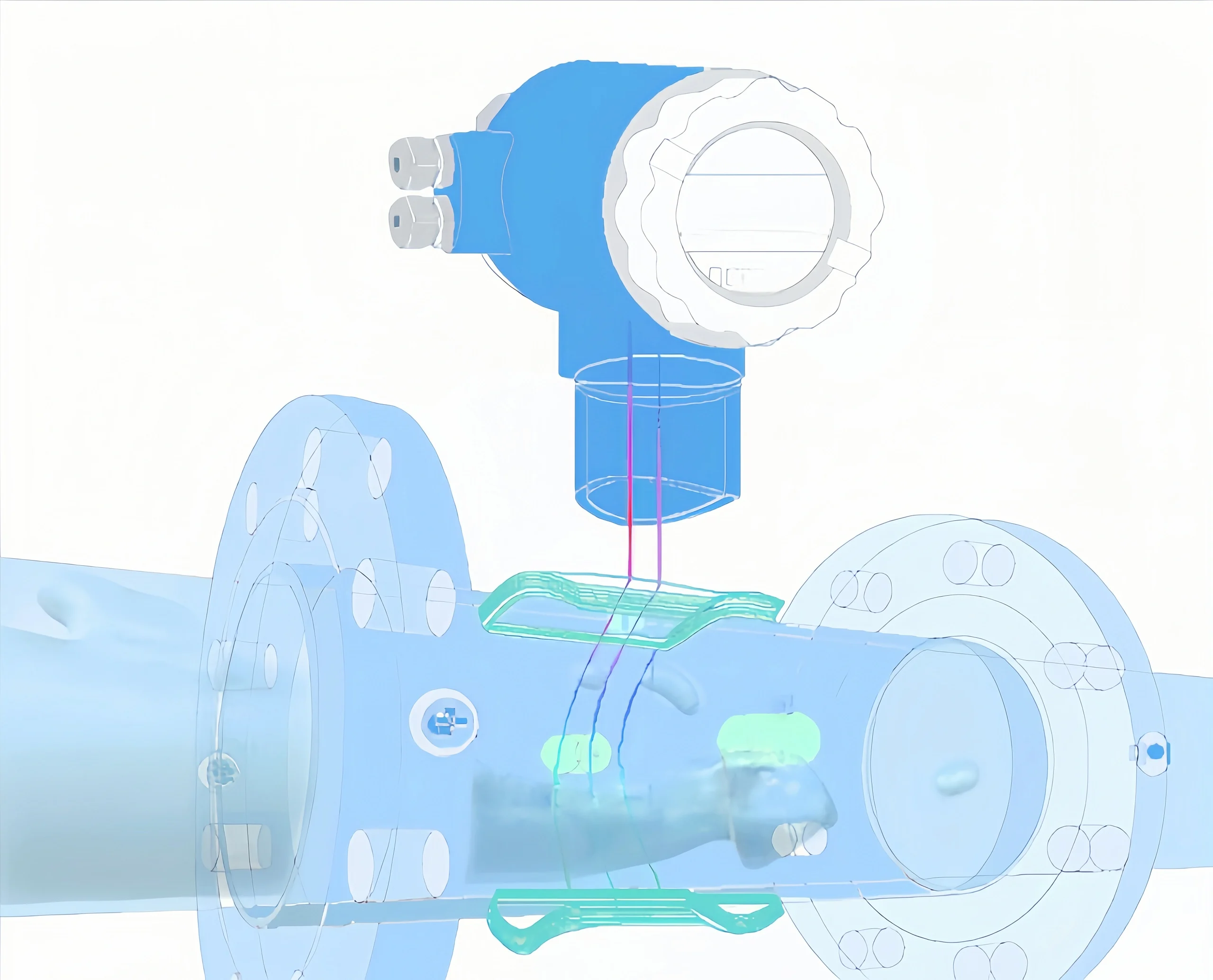
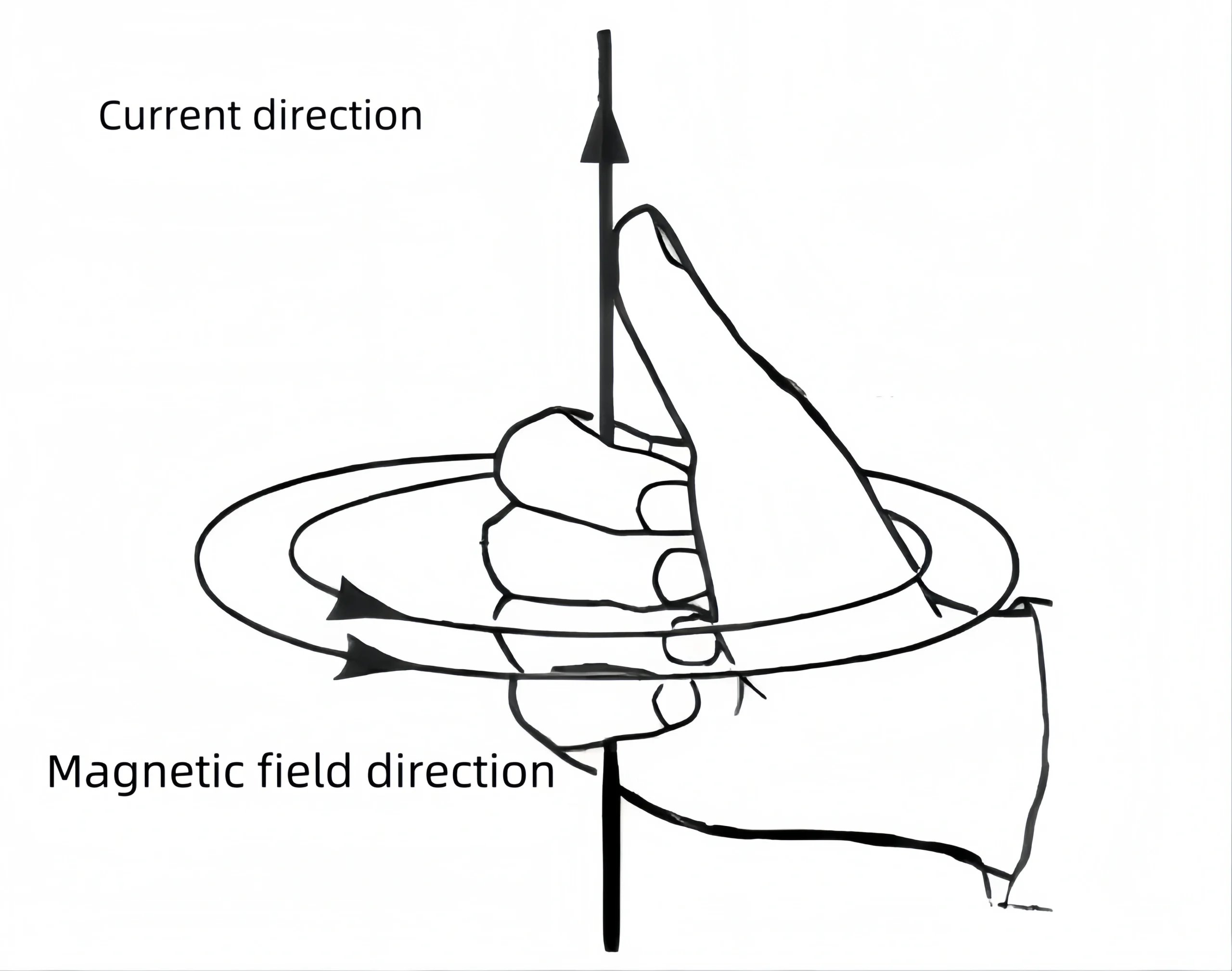
Magnetic Flow Meter Applications
Electromagnetic flow meters are suitable for a variety of industrial processes. It mainly used in the following fields:
Chemical industry
Measure the flow of corrosive liquids such as acid, alkali, and salt solutions. They are widely used in raw material transportation, reaction process control, and product output in chemical production.
Pharmaceutical industry
In the process of drug production, it is used to measure the flow of liquid medicine, biological fermentation liquid, etc.
Ensure the accuracy and compliance of the production process.
Food and beverage industry
Used to measure the flow of liquids such as beverages, juice, milk, and beer. Control product quality and production efficiency.
Papermaking industry
Measure the flow of media such as pulp and black liquor. Optimize papermaking process and wastewater treatment.
Mining and mineral processing
Measure the flow of slurry. Ensure the stable operation of mineral transportation and mineral processing processes.
Water treatment and environmental protection
Used to measure the flow of tap water, sewage, desalinated water, etc.
Power industry
Measure the flow of cooling water, chemical water, etc. Ensure the normal operation of power generation equipment.
Oil and gas industry
Measure the flow of drilling fluid, oily wastewater, etc.
Optimize drilling and environmental protection treatment.
Municipal engineering
Monitoring of urban water supply and drainage systems. Maintain the stable operation of municipal facilities.
Electromagnetic flowmeters are particularly suitable for measuring conductive liquids and slurries. Due to their no mechanical moving parts, strong corrosion resistance, high measurement accuracy, and strong adaptability.
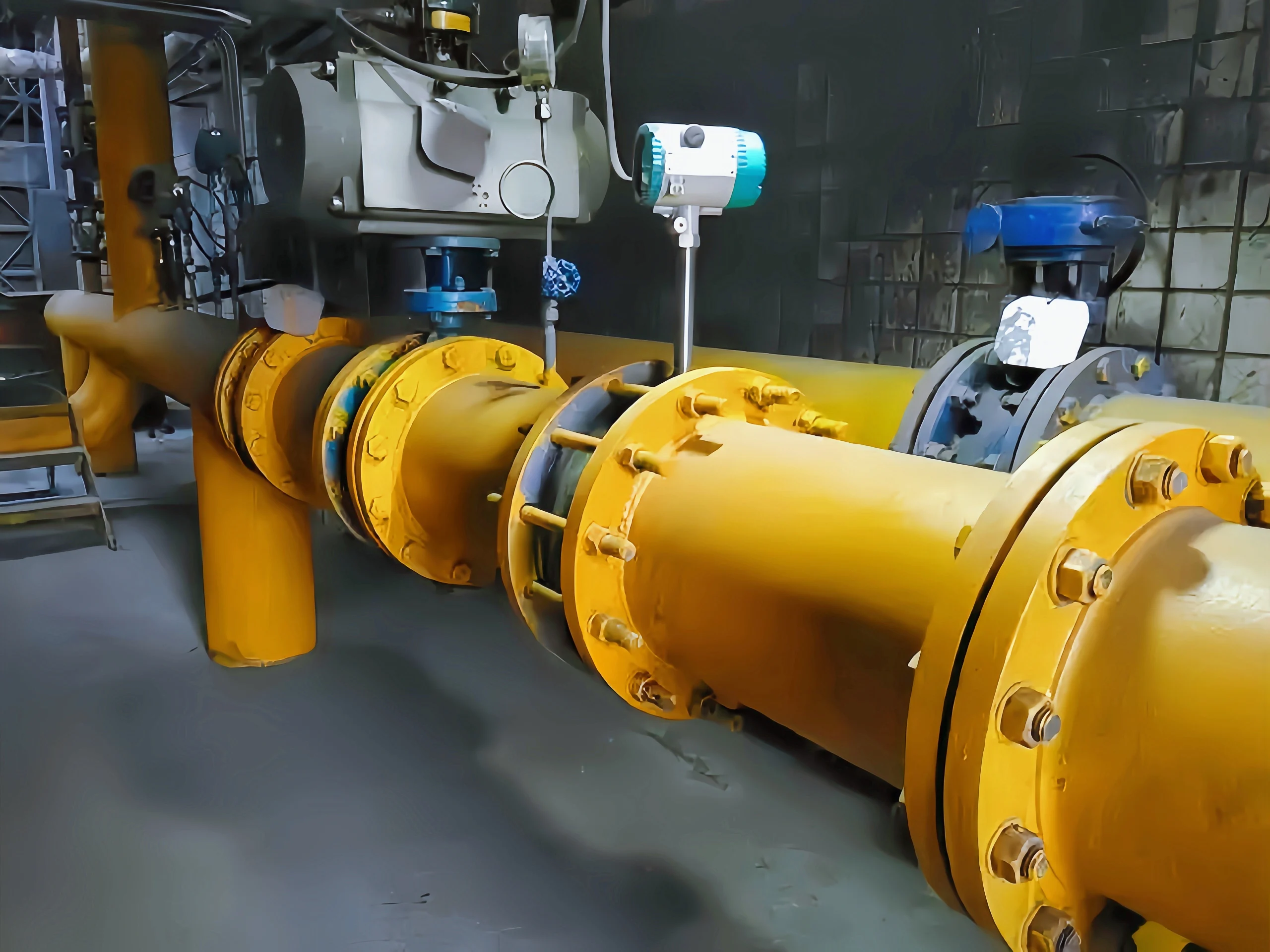
What Media Does a Magnetic Flow Meter Measure?
Magnetic flow meters are mainly used to measure the flow of liquid media with conductive properties. Usually, as long as the conductivity of the medium is greater than the conductivity of water (approximately 5 μS/cm). Electromagnetic flow meters can be used for measurement. Therefore, it is widely used in the following media:
1. Water and solutions containing trace ions: including tap water, industrial water, drinking water, etc.
2. Acid and alkali solutions: such as strong acid and alkali solutions, such as sulfuric acid, hydrochloric acid, and sodium hydroxide.
3. Liquids in the food and beverage industry: such as beer, milk, juice, and other liquids with a certain conductivity.
4. Various conductive liquids and liquid-solid two-phase media in the chemical industry: such as highly corrosive chemicals.
5. Slurry and mud: used to measure the flow of slurry or mud containing solid particles in the mining industry.
6. Liquids in the wastewater treatment process: including sewage and wastewater after preliminary treatment.
7. Paper mills: stable and accurate when measuring pulp flow. No need for frequent calibration, saving time and effort.
It should be noted that electromagnetic flow meters are not suitable for measuring the flow of gas and steam because they are not conductive.
In addition, liquids with high resistivity, such as pure water, organic solvents, etc., are due to their poor conductivity. They are not suitable for measurement using electromagnetic flowmeters.

How Accurate are Magnetic Flow Meters?
The accuracy of electromagnetic flow meters is usually divided into ±0.2%, ±0.5%, ±1.0%, ±1.5%, ±2.5%, etc. Different accuracy levels represent different measurement error ranges.
The accuracy of a magnetic flow meter is an important indicator for measuring its measurement accuracy. It reflects the degree of closeness between the measurement result and the true value. There are some factors affecting accuracy.
Instrument characteristics: The manufacturing process and quality control level have a significant impact on the accuracy of electromagnetic flowmeters.
Fluid characteristics: Fluid conductivity, temperature, pressure, viscosity and other characteristics will affect measurement accuracy.
Installation conditions: Correct installation is the key to ensuring the accuracy of electromagnetic flowmeters.
Operating conditions: The flow rate and flow stability of the fluid have an important impact on accuracy.
How to Calculate Magnetic Flow?
Magnetic flow meters use the principle of Faraday’s law of electromagnetic induction, that is, when a conductive object cuts a magnetic wire in a magnetic field,
an induced electromotive force is generated in the conductor. Its induced electromotive force E is:
E=KBdV
Flow rate Q is:
Q=3600×V×S
Where: K—Instrument coefficient
B—Magnetic induction intensity (T)
d—Electrode spacing (m)
V—Average flow velocity of fluid (m/s)
S—Cross-sectional area in conduit (m2)
When measuring flow rate, the conductive liquid flows through a magnetic field perpendicular to the flow direction at a flow velocity V, and the flow of the conductive liquid induces a voltage proportional to the average flow velocity. Its induced voltage signal is detected by electrodes in direct contact with the liquid. For the same flow meter, S, B, and d are constants, so the flow rate is proportional to the size of the induced electromotive force E (or flow velocity V).
Magnetic Flow Meter Disadvantages
1. Only applicable to conductive liquids
Electromagnetic flowmeters work based on the Faraday electromagnetic induction principle. The conductivity of the measured medium is required to be ≥5μS/cm. Therefore, it cannot measure low-conductivity liquids such as oils, organic solvents, and pure water.
2. Affected by bubbles and solid particles in the medium
If the fluid contains a large number of bubbles or solid particles, it may cause electrode contamination, signal fluctuations, or even measurement failure. In sewage treatment or high solid content conditions. The electrodes need to be cleaned regularly or wear-resistant lining materials (such as ceramics) should be selected.
3. Harsh installation conditions
High straight pipe section requirements: If the installation location is close to the pump, valve or elbow, the turbulent flow pattern will cause measurement errors. Sufficient front and rear straight pipe sections must be ensured.
Strict grounding requirements: Poor grounding will introduce interference and cause signal instability. Especially in strong electromagnetic interference environments, more caution is required.
4. Lining and electrodes are susceptible to corrosion or wear
The lining (such as rubber, PTFE) and electrodes (such as 316L, Hastelloy) of the electromagnetic flowmeter need to be selected according to the characteristics of the medium. Highly corrosive, high-temperature or high-wear media may shorten the life of the lining and electrodes and increase maintenance costs.
5. Not suitable for low flow rate measurement
The electromagnetic flowmeter has a weak signal at low flow rates (usually <0.3m/s) and the measurement accuracy decreases. If the operating flow fluctuates greatly, it is necessary to combine other flow meters or adopt a multi-sensor solution.
6. High cost
Compared with turbine, vortex and other flow meters, electromagnetic flow meters are more expensive, especially large-caliber or special material (such as titanium electrode, ceramic lining) models.
7. Temperature restrictions
Ordinary linings (such as rubber, PTFE) have limited temperature resistance. High-temperature media (>180℃) may damage the lining, and special materials or cooling measures are required.
Magnetic flow meters can measure a variety of media. When selecting and using electromagnetic flowmeters, it is necessary to comprehensively consider the specific application scenarios. Try to avoid the influence of its disadvantages.
If you need to measure flow, please contact us! Sino-Inst will recommend a suitable measurement solution for you free of charge. Sino-Inst’s products have a very high cost-performance.

